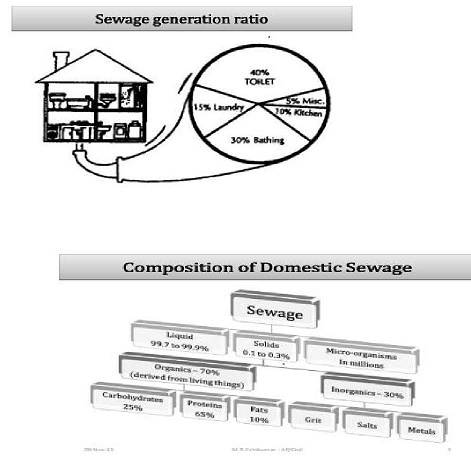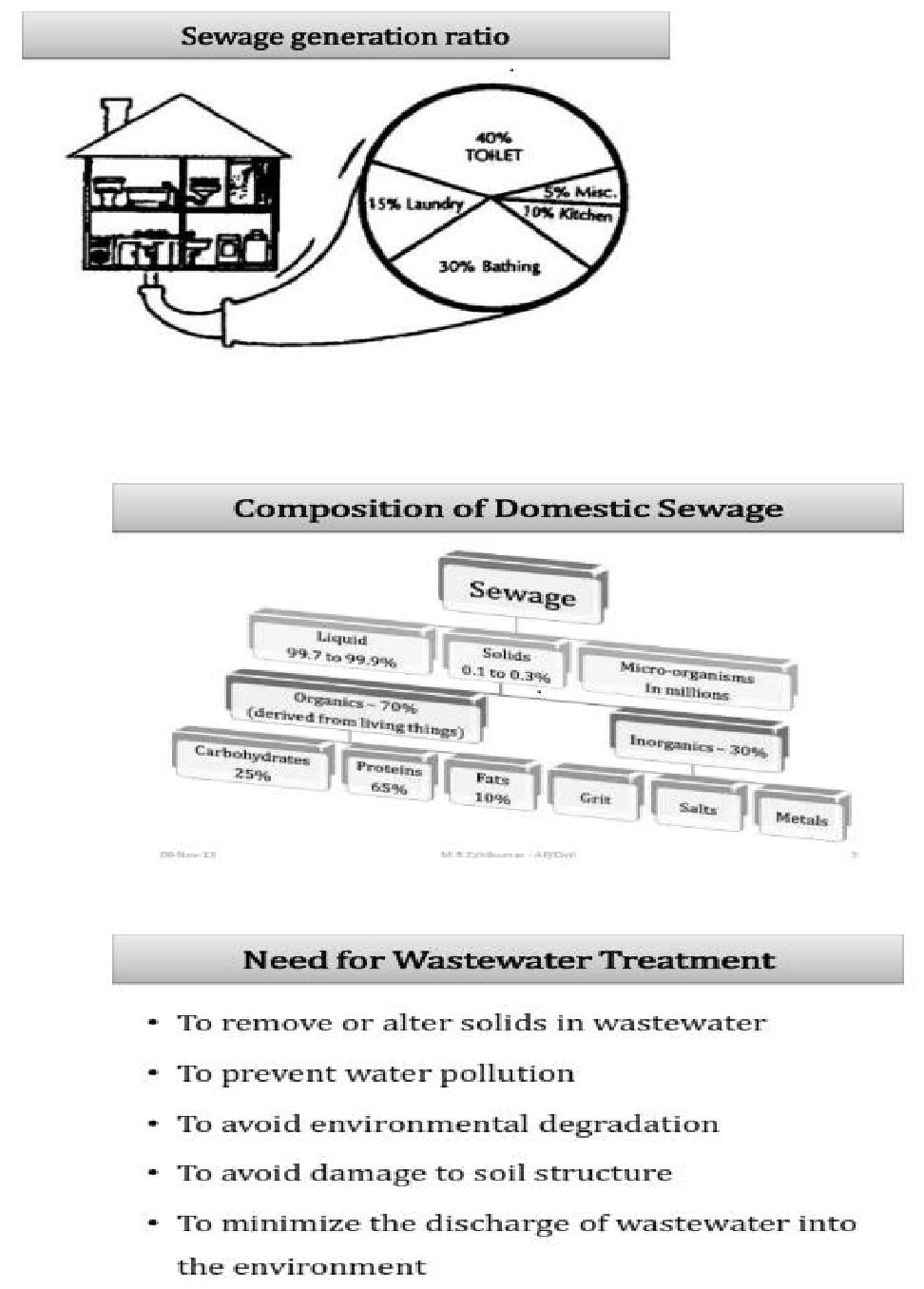Chapter: Civil : Environmental Engineering : Sewer Design
Treatment of Sewage: Introduction

Treatment of Sewage: Introduction
The most modern of
Watercare's wastewater treatment plants- including the plants at Mangere and
Rosedale - use primary (mechanical), secondary (biological), tertiary
(filtration) and ultraviolet (radiation) methods to treat domestic and
industrial wastewater (sewage) and storm water. The average volume of
wastewater treated is 300,000 cubic metres per day. Wastewater treatment is
designed to safeguard public health and to protect the environment. Wastewater
(sewage) is 99 percent water and usually contains:

Organic material - solid
organic wastes such as food scraps, toilet wastes, paper etc. (including
leaves/wood etc from storm water infiltration). Food processing and textile
industries contribute large quantities of organic materials, ie fruit/vegetable
pulp, wool etc.
Grease and oils - household wastes contain cooking oil/ fat, soap and
body oils from baths / showers. Industrial wastes can contain greasy
organic compounds and inorganic (mineral) oils.
Inorganic material - wastewater contains sand, silt and gravel (grit). Most
of this comes from stormwater infiltration.
Nutrients - our bodies need nutrients like phosphorus and nitrogen
and these are naturally excreted in our wastes. Some industrial wastes
also contain nutrients.
Metals - tiny amounts of metals, ie iron, copper and zinc, are
naturally present in human wastes. Others such as lead, chromium and
cadmium can be present from stormwater run-off and industry.
Chemicals - as a result of household cleaning (eg dish washing
detergents and shampoos) or through process wastes from industry, many
different chemicals are contained in wastewater, some of which are toxic.
Micro-organisms -
bacteria, viruses and other micro- organisms that live in the human gut and
are excreted in large numbers. Most of these organisms are harmless and
some are even beneficial. Sick people, however, can excrete large numbers of
pathogenic (disease-causing) micro- organisms, which end up in the wastewater
flow.
The contents of the stream will vary depending on
the season, day, time and the type of industries being served.
Related Topics